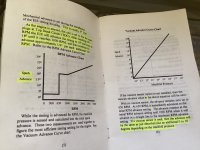rmarshall234
Well Known Member
I picked up an original TR ElectroAir unit like the one I had on my RV3 years ago and am installing it on my 180hp Lyc O-360 but want to use automotive plugs this time. What are you guys -that are running this system- using as an automotive plug? I have chrome cylinders and burn a bit of oil so might need something on the hotter side.


